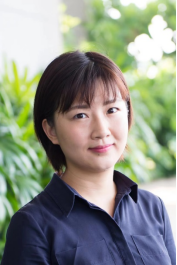报告题目:Multi-material and multi-scale additive manufacturing of composite materials for multifunctional applications (多材料、多尺度增材制造复合材料及其多功能应用)
报告人:Zhai Wei(新加坡国立大学)
报告时间:2023年5月18日(星期四)上午10:00
线上:腾讯会议533-549-876
线下:重点实验室南楼323会议室

报告人简介:
ZHAI Wei,新加坡国立大学机械工程系助理教授,博士生导师,博士毕业于英国剑桥大学,本科毕业于北京科技大学,现担任 Material Today Communications 编辑,Materials & Design主编助理。主要从事先进结构和功能材料的制备、成形及多功能特性研究(Multicomponent and Multiscale Manufacturing of Materials with Multifunctionality, 5Ms),主持新加坡教育部Tier 2、Tier 1项目、新加坡科技研究局(A*STAR)青年学者研究项目、新加坡国立大学基础研究基金、新加坡科技局与英国劳斯莱斯合作项目等多项科研项目。近3年,以通讯作者在 Science Advances, Advanced Materials, Advanced Functional Materials, Materials Horizons, Acta Materialia, Small,Applied Materials Today等顶级学术期刊发表论文 30 余篇。
新加坡国立大学目前QS世界大学排名第11位,亚洲第1,其中机械工程专业QS世界排名第9,材料科学专业QS世界排名第7。
报告摘要:
The development of advanced materials has become increasingly crucial to meet the growing demands of multifunctional applications in various industries. Nature has been an abundant source of inspiration for high-performance and mechanically efficient materials, which have undergone millions of years of evolution and natural selection to achieve their complex yet ordered hierarchical structures. With the advent of additive manufacturing, advanced materials can now be designed and manufactured with arbitrary designs not only in the macroscale, but also across multiple length scales ranging from nano-, micro- to macroscales.
In this talk, I will showcase our recent progress on multi-materials and multi-scale additive manufacturing of composite materials with promising multifunctional applications. Specifically, I will discuss the use of emulsion direct ink writing (DIW) to create hierarchical porous materials and their applications, shear-stress driven DIW to produce concentric cylindrical composites for multifunctional purposes, and ultrasound-assisted digital light projecting 3D printing of polymer composites for energy absorption applications. These examples demonstrate the potential of additive manufacturing in producing advanced materials with hierarchical microstructure and highly desirable properties for diverse industrial applications.